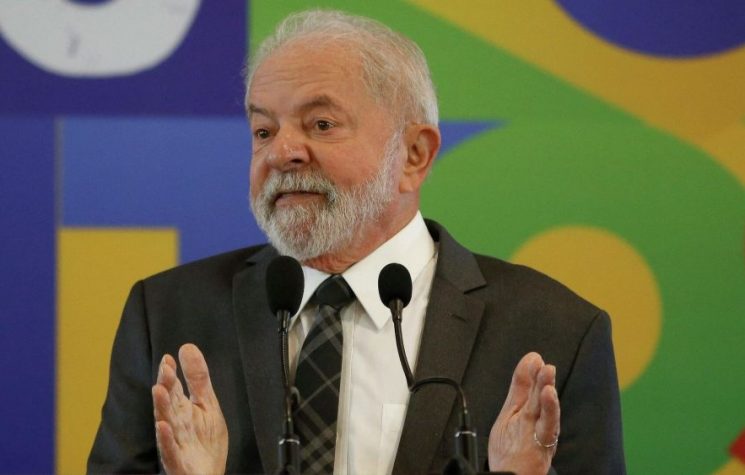The devastating impact of the coronavirus on Italy has sparked considerable speculation as to why the country appears to have suffered so disproportionately from the disease. Some initial theories suggested that the deaths might be due to lower standards and ill-advised practices in the Italian national health system, but the reality is that northern Italy, where the virus has struck hardest, has by most metrics better and more accessible health care than does the United States overall.
By one reckoning, the claimed number of dead is too high because anyone who tested positive and died had his or her death attributed to the virus even if it was actually due to other unrelated causes. And that argument has also been flipped on its head to demonstrate that the numbers are too low, using the fact that many Italians have not been tested for the virus to assert that many dead were actually caused by coronavirus. Since those dead were not medically confirmed positive for COVID-19, the deaths were erroneously attributed to other causes.
A third bit of somewhat more bizarre speculation centers on the fact that in September 2019 Italy made legal euthanasia for those with terminal illnesses seeking to end their suffering, a move strongly opposed by the Roman Catholic Church. Some of those weighing in on the number of deaths have claimed without evidence that a significant percentage of the dead were actually cases of euthanasia, i.e. implying that Italy has been deliberately killing off its elderly. Those seeking an explanation for such bizarre behavior by the national health service have suggested that it would be to ease pressure on the troubled Italian economy by eliminating old age pensions and medical costs.
Be that as it may, there is an interesting backstory developing in the Italian media about why Italy has been hit so hard by the “Chinese” virus in spite of the fact that it has been in lockdown for over one month. Italy’s ties with China, and with the city of Wuhan, where the virus may have originated, run deeper than with any other European country.
Last spring, when my wife and I were traveling in Northern Italy, we noticed the large numbers of Chinese, not only in tourism centers like Venice and Verona, but also in commercial and industrial areas. Italian shop holders we spoke with told us how the Chinese government and individual entrepreneurs were buying up businesses and properties at an alarming rate, penetrating the Italian economy at all levels. One gift shop proprietor in Venice described how even tourist items were increasingly being manufactured in China, a development which he described as “selling cheap junk.” He reached beneath his counter and produced a perfume bottle which looked like a local product but instead of being made in Murano it bore a tiny stamp “Made in China.”
A little less than a year ago Italy became the first G-7 country in Europe to sign a memorandum of understanding formalizing its membership in the Chinese Belt and Road project, part of the Silk Road scheme to create a vast linked commercial network across Asia and into Europe. Two of the main hubs being developed for the project are Genoa and Trieste. The Italian government, confronted with a struggling economy, based the move on “commercial reasons” and “economic advantages,” to include the investment being offered by Beijing, but Rome paid a price for the move with intense criticism coming from both Washington and Brussels. The Atlanticist crowd, which normally applauded a form of globalism and free trade, inevitably insisted that not only were the Chinese seeking to “destabilize” Europe, Beijing was also attempting to divide Europe politically and militarily from the United States.
One of the more interesting, and perhaps coincidental, aspects of the Chinese entry into Italy has been the particular connection between China and the northern Italian fashion houses, centered on Milan, that have shifted their production to Wuhan to take advantage of the cheap labor in China’s own textile industry, largely centered on the city. By all accounts, Chinese investors bought up factories in Northern Italy starting in the early 1990s. By 2016 many major brands had been completely acquired, to include Pinco Pallino, Miss Sixty, Sergio Tacchini, Roberta di Camerino and Mariella Burani while major shares of Salvatore Ferragamo and Caruso were also obtained.
The Chinese owners and investors replaced ageing machinery and brought in, often illegally, tens of thousands of skilled Chinese seamstresses as a labor force. By the end of last year when the virus first struck China, direct flights from Wuhan to Lombardy served the roughly 300,000 Chinese residents of Italy who mostly work in Chinese-owned factories producing Chinese inspired Made in Italy designs. It is widely believed, though not confirmed by the Rome government, that the first infections by coronavirus in Italy, attributed to visiting “tourists,” actually may have taken place in crowded dormitories where Chinese shift workers from Wuhan dined and slept.
In less than a year, however, Italians have come to realize that a tight economic embrace with Beijing also has a downside. Italy’s trade gap with China has gone up, not down and much promised investment in new enterprises has failed to materialize. But even as the dust cleared, the results derived from opening the door to China were not pretty. By 2016, Chinese acquisitions had exceeded 52 billion EUROS, giving them ownership of more than 300 companies representing 27% of major Italian corporations.
The Bank of China now owns five major banks in Italy as well as the major telecommunication corporation (Telecom) and the two top energy utilities (ENI and ENEL). China also has controlling interest in Fiat-Chrysler and Pirelli.
More recently, Italian government views on China’s human rights record in Hong Kong have hardened and the country’s legislature has rejected overtures by the Chinese telecommunications conglomerate Huawei to have a major role in developing the country’s new 5G technology. One might observe, however, that the barn door is being closed after the horse has already escaped.
To limit the damage, the Chinese have sweetened their economic expansion into Western Europe by carefully integrating trade with humanitarian initiatives to make the transformation palatable to the local populations. The Health Silk Road initiative is a major exercise of soft power which has, in the current crisis, provided various forms of emergency medical assistance to a number of European nations. In doing so, it has done more than the European Union or the United States. Italy currently has three Chinese medical teams assisting its doctors in and around Milan and has benefited from airlifted medical supplies to include millions of masks and testing kits.
China is not doing what it does for altruistic reasons. It sees itself as the major economic driver of a new globalism, displacing an increasingly foundering and incapable United States, which has dominated world finance and commerce since the Second World War. For China COVID-19 is seen as an opportunity to reconfigure the playing field in its favor.
The experience of Italy, which may have become an epicenter for the virus due to its close commercial and personal ties to China, is illustrative of how globalism and free trade being promoted by a number of engaged groups in many countries can be exploited to create a new reality. Beijing is shaping that reality while the U.S. and E.U. stand on the sideline and watch.


















































